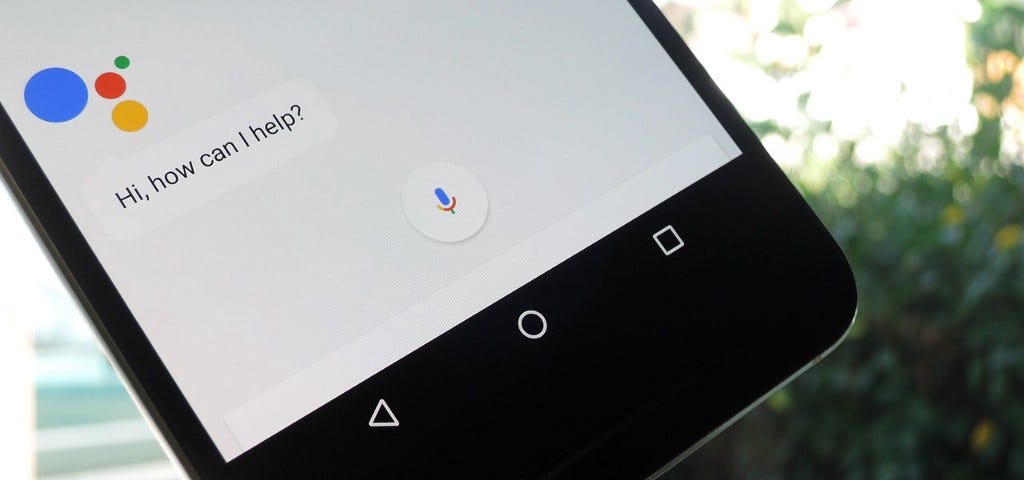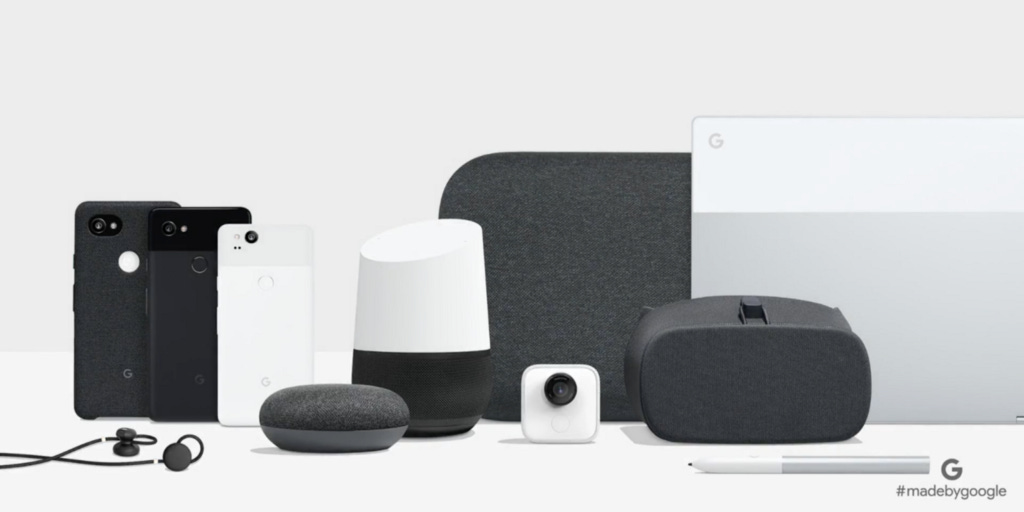How Google Eats Itself — The Future of SEO is Google Assistant
How Google Eats Itself
This week, Google announced a diverse lineup of hardware termed the ‘Made by Google’ family. They’re bringing new phones, headphones, camera, VR device, speakers, and laptops to market.
But what made the announcements so meaningful transcends hardware.
The most important news is the proliferation of the Google Assistant.
With the release of the Pixel 2 comes a new feature called “Active Edge” where people can just squeeze the phone to activate Google Assistant. Google Assistant routines are coming to the phone as well. Google Pixel Buds are a pair of new premium headphones where people just touch and hold the earbud for Assistant commands. Finally, Google Assistant comes to the Google Home Max and Mini.
Accessing Google Assistant is becoming frictionless.
One important thing to consider is how the traditional search landscape going to change with the explosion of Google Assistant. This is new territory that marketers need to master.
We are moving into an era where we bid farewell to search and scroll. We instead are already interacting with smart speakers and assistants. We’re having conversations with these apps, and they are talking back.
With voice and conversational search, we arrive in new, unchartered SEO waters.
SERP’s & SEO
On Google, users conduct over 3.5 billion search queries daily. If brands manage to hit high visibility on search engines, thanks to their relevant content, brands will experience higher traffic and conversions. If a brand is not featured on the first page of the SERP’s, they are basically invisible as 75% of users don’t click past the first results page. Large and small brands have come to realize the vital importance of employing SEO techniques to increase their ranking and revenue.
Personalizing Search
Today’s news talked about building a “personalized Google” for every individual. We are now standing on the threshold between “SEO” we have come to know, and “PASO”. “PASO” or personal assistant search optimization is the evolution of SEO. With Google Assistant on an individual’s Pixel 2 smartphone, Pixel Buds, and Google Home Mini, a conversation will invoke access to searching for info. It’s a hands-free, fast, conversational way to make people’s lives simpler. For example, when we ask our Google Assistant to give us recommendations for a great Sushi restaurant, it will now return with about 1–4 personalized suggestions. Can you imagine the volume of traffic those four options are going to receive?
A mission-critical goal for businesses needs to be figuring out the ways to be one of those four options Google Assistant delivers to each user. For that to happen, brands are going to have to work out their PASO strategy in the same way they spent time and energy on SEO.
Actions on Google
If a brand hasn’t as yet joined in the voice search arena, Google is making it possible to get a front row seat. Their “Actions on Google” lets individuals use their Google Assistant to complete activities like ordering food or booking a hotel through conversation. A Google Assistant developer can use the platform to build apps for brands so they can be featured in every area where the Google Assistant is available. For example, a Google Assistant developer can now create “actions” which allows Google users to have conversations with brands and engage with their products and services
Brands on Google Assistant
Many brands are already having deep, meaningful conversations using “Actions” meaning Google will show the most relevant searches first. For example,
1. Kayak was first in line to jump on board the Google Assistant app to start talking to users via the Google chatbot. To get chatting all users have to say is “Ok Google, talk to KAYAK” when using the app followed by their travel question. They can have a conversation about hotel options for their holiday in South Africa and book the accommodations for their upcoming trip. Kayak is becoming a new authority on travel search.
2. Users can also hear their news directly from the Wall Street Journal on Google Assistant on Google Home. They simply say, “Ok, Google, ask The Wall Street Journal for the latest news,” and the user can listen to the top stories thanks to the Google chatbot. One day, when users ask for financial news, WSJ may automatically surface first.
3. The PGA Tour allows users to get personalized team news.
4. Individuals can also “talk” to Johnnie Walker as “he” gives them a guided tasting and some Whisky 101 facts. They may rank for “How to make a cocktail”.
Vying for the Top Spot
The battle for dominance in the voice and chat interface has started is a full on chat war with Google going head to head with Amazon and Apple.
Even with the new suite of hardware announced today, Rick Osterloh, SVP of Hardware at Google said on stage, “Hardware isn’t able to offer big leaps in experience alone. The next big improvement will come from AI, software, and hardware combined.”
Google’s long history as the number one search engine in the world has ensured that it has a unique understanding of all aspects of “search.” All of that knowledge goes into the capabilities of Google Assistant.
The big question remains; how will your brand navigate the new landscape from SEO to PASO? We think about these types of questions, and any of those related to conversational UI all day at Snaps. If you’re interested in PASO, chatbots, “Google Assistant Chatbot” or how to develop a Google Assistant action, I’d love to chat with you.
☞ As always, please tap or click “︎👏🏻” to let Jonathan and others know that you appreciated this piece.


